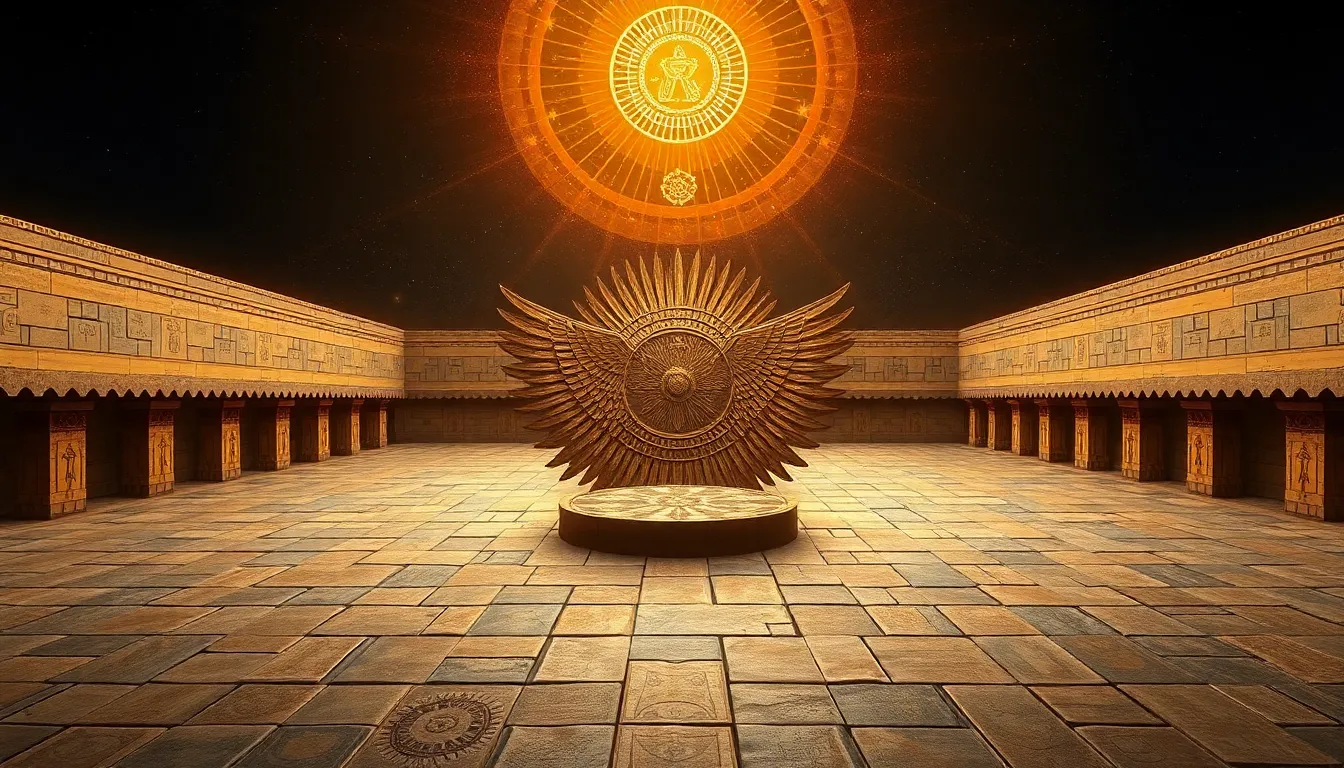The Role of Sacred Geometry in Egyptian Rituals
I. Introduction
Sacred geometry refers to the geometric shapes and proportions that are believed to have spiritual significance. In ancient Egypt, this concept was intricately woven into the fabric of their culture, influencing everything from architecture to religious practices. The purpose of this article is to explore the historical context, key geometric shapes, and the role of sacred geometry in Egyptian rituals, as well as its lasting impact on spirituality.
II. Historical Context of Sacred Geometry in Ancient Egypt
The origins of sacred geometry can be traced back to various ancient civilizations, with Egypt being one of the most notable. The Egyptians utilized geometric principles extensively in their art and architecture, signifying a deep connection between geometry and their cosmological beliefs.
- Geometry was seen as a means to understand the universe.
- Shapes and patterns were often associated with deities and the afterlife.
In Egyptian cosmology, the structured order of the universe was mirrored in the precision of their geometric designs, reinforcing the belief that the cosmos was a reflection of divine order.
III. Key Geometric Shapes and Symbols in Egyptian Rituals
Ancient Egyptians placed significant importance on various geometric shapes, each carrying its own meaning and symbolism. Some key shapes include:
- The Circle: Symbolizing eternity and the cyclical nature of life.
- The Triangle: Often associated with the divine and the trinity of gods.
- The Square: Representing stability and the physical world.
Additionally, the golden ratio and Fibonacci sequence were reflected in their art and architecture, creating a sense of harmony and balance. Notable symbols such as the Ankh, representing life, and the Eye of Horus, symbolizing protection and royal power, are also deeply rooted in geometric principles.
IV. Sacred Geometry in Egyptian Architecture
The design of temples and pyramids showcases the profound influence of sacred geometry. Structures were meticulously planned to reflect spiritual beliefs and practices, often aligned with celestial events.
- Great Pyramid of Giza: Its dimensions and layout are believed to encode mathematical constants, aligning with specific stars.
- Temple of Karnak: The layout of this vast temple complex illustrates the use of geometric principles in religious architecture.
These architectural feats not only served as places of worship but also as cosmic symbols meant to connect the earthly realm with the divine.
V. The Role of Sacred Geometry in Egyptian Religious Practices
Sacred geometry played a crucial role in the layout of sacred spaces, such as temples and burial sites. The arrangement of these spaces was often dictated by geometric principles, enhancing their spiritual significance.
- Rituals and Ceremonies: Many rituals were conducted according to specific geometric patterns, believed to align participants with cosmic forces.
- Mummification and Burial Practices: The use of geometry in these practices ensured that the deceased’s journey into the afterlife was harmonious and aligned with universal laws.
These practices underscore the Egyptians’ belief in the interconnectedness of the material and spiritual worlds.
VI. Connections Between Sacred Geometry and Astronomy
The alignment of temples and pyramids with celestial bodies demonstrates the Egyptians’ deep understanding of astronomy and its significance in their religious practices. Many structures were designed to correspond with key astronomical events, such as solstices and equinoxes.
- Celestial Alignments: Temples were often oriented to capture sunlight at specific times of the year.
- Astronomical Events: Certain rituals were performed in accordance with celestial events, reinforcing the link between their beliefs and the cosmos.
Furthermore, the use of geometry in the Egyptian calendar and timekeeping systems reflects their reliance on celestial patterns to guide their agricultural and spiritual activities.
VII. Modern Interpretations and Influence of Sacred Geometry
Today, there is a resurgence of interest in sacred geometry within contemporary spirituality. Modern practitioners often draw inspiration from ancient Egyptian rituals and principles, integrating them into new spiritual practices.
- Contemporary Spirituality: Many spiritual movements emphasize the use of geometric patterns in meditation and healing.
- Comparative Analysis: While ancient practices were deeply rooted in religious context, modern interpretations often focus on personal spiritual growth.
This revival highlights the timeless nature of these principles and their relevance in understanding the universe and our place within it.
VIII. Conclusion
Sacred geometry served as a fundamental aspect of Egyptian rituals, influencing their architecture, religious practices, and cosmological understanding. The significance of geometric principles in ancient Egyptian culture continues to resonate today, illustrating a profound connection between spirituality and the mathematical order of the universe.
As we explore these ancient practices, we gain insights into the ways in which geometry can enhance our understanding of the world and inspire our spiritual journeys.




